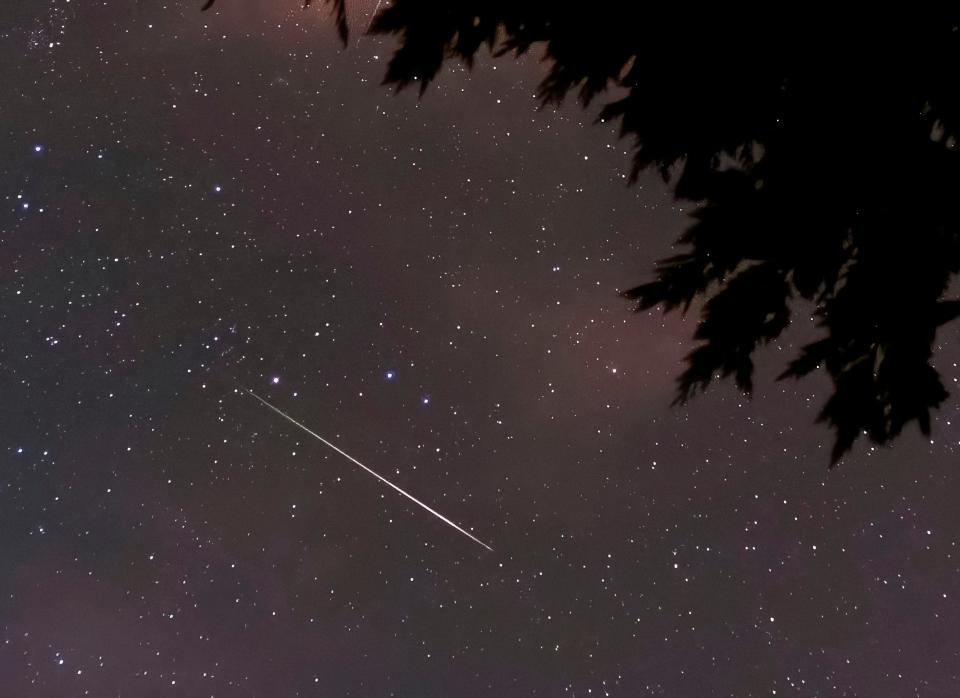NASA: Peak time to see Perseid meteor shower this weekend. What to know about 3 big shows
Skywatchers around the world can gear up for a series of meteor showers that are currently active and approaching their peak viewing times.
What's more, all three meteor showers are conveniently set to dazzle stargazers on Saturday and Sunday nights in Oklahoma.
Here's what to know about shooting stars this summer:
Perseid Meteor Shower

NASA has declared the Perseids Meteor Shower as the standout event of the year, promising up to 100 meteors per hour. This stunning display of shooting stars became visible in the northern hemisphere on July 14 and will continue until Sept. 1.
Meteors and fireballs may be visible as early as 10 p.m. originating near the Perseid constellation and becoming recognizable when nearing the Cassiopeia constellation.
To catch the Perseids at their peak, mark your calendars for the nights of Aug. 12 or 13, advised NASA.
For the best viewing experience, the pre-dawn hours are recommended although a relatively less bright moon is expected to result in darker skies that enhance meteor observation.
Alpha Capricornid Meteor Shower
On the night of July 30, stargazers may be in for a treat as the Alpha Capricornids Meteor Shower is also set to reach its peak. Although this shower is considered weaker than others, with only about five meteors visible per hour, it is known to produce impressive fireballs in smaller quantities, according to the American Meteor Society.
One advantage of the Alpha Capricornids is that they can be observed equally well from both the northern and southern hemispheres.
Delta Aquariid Meteor Shower
While the Delta Aquariids Meteor Shower may not match the grandeur of the Perseids, it comes with an extended period of possible meteor sightings.
According to the American Meteor Society, this shower will be primarily visible in the southern tropics from July 18 to Aug. 21, with an estimated peak around July 30. It is less likely to be observed in the northern hemisphere compared to the southern regions.
Interested viewers should direct their gaze towards the Delta Aquarii constellation between 2 a.m. and dawn.
As the anticipation builds up, astronomers and enthusiasts alike are eagerly awaiting these upcoming meteor showers. Remember to mark your calendars and find a suitable dark spot away from city lights.
This article originally appeared on Oklahoman: Meteor shower this weekend: How to see Perseid, others in Oklahoma

